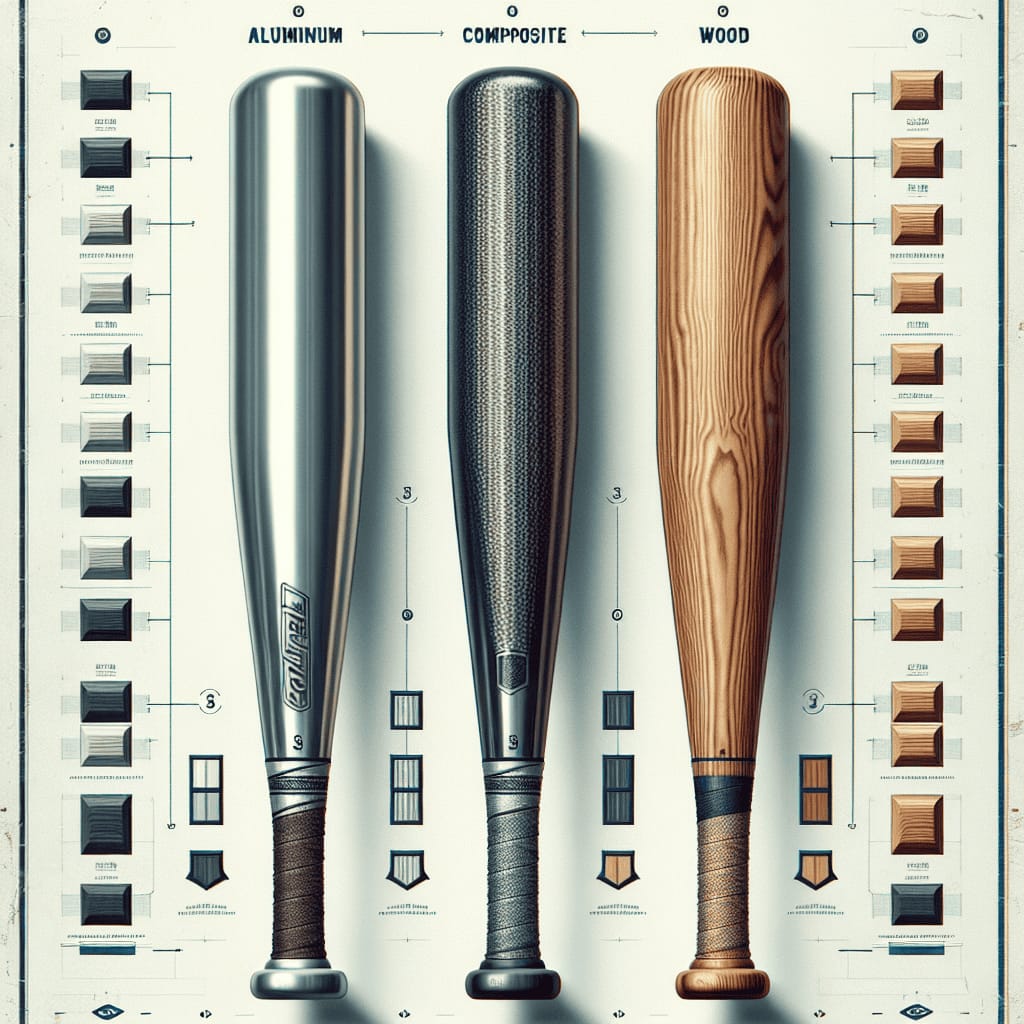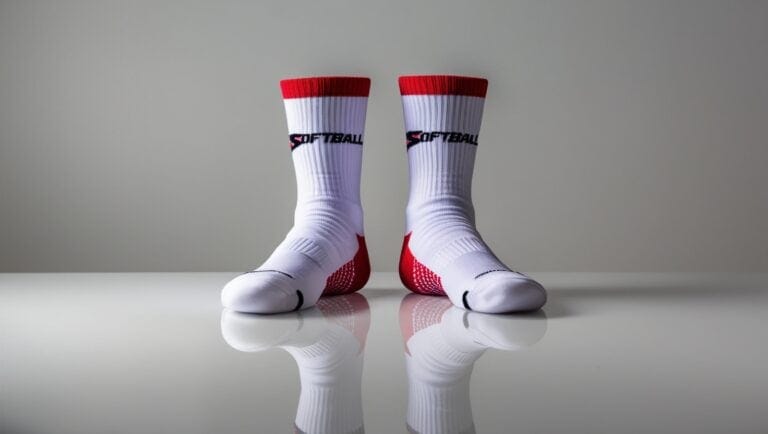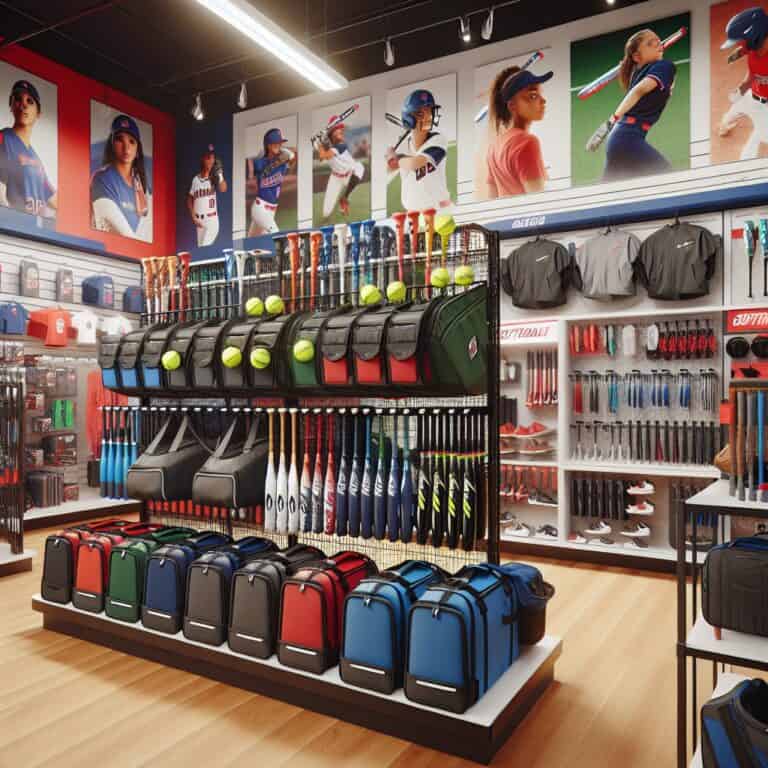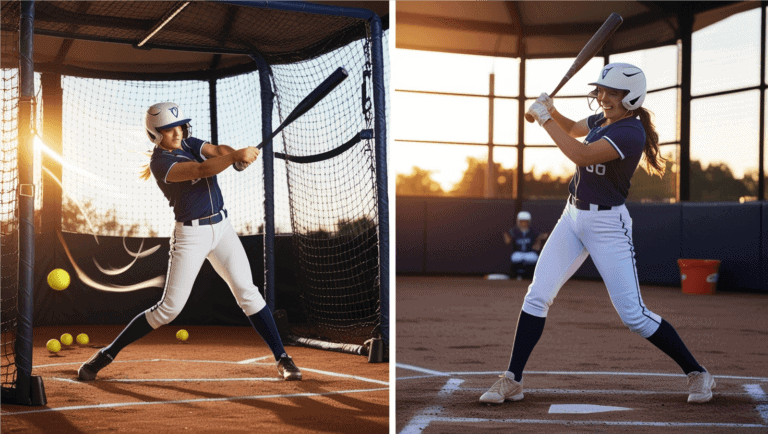Pro Player’s Softball Bat Materials Comparison: Best In 2025

Batter up! Are you ready to knock it out of the park this season? Whether you’re a seasoned pro or a weekend warrior, choosing the right softball bat can make all the difference in your game. But with so many materials on the market, how do you know which one is right for you? Let’s dive into this softball bat materials comparison guide and help you find your perfect match. Get ready to swing for the fences!
Aluminum Bats: The Classic Choice
Okay, let’s talk about aluminum bats, also known as metal alloy bats shall we? These bad boys have been around for ages in the softball world, and for good reason. I remember when I first picked up an aluminum bat – it was the first bat I ever owned.
Aluminum bats burst onto the scene back in the 1970s, and they’ve been a staple ever since. They’re the old reliable of the softball bat materials comparison game. What’s so great about them? Well, for starters, these things are tough as nails. I’ve seen players who have made their aluminum bats work overtime and still use them in the next game with great performance.
Another big plus is that they won’t break the bank. As a coach, I always recommend aluminum bats to beginners or players on a budget. They give you consistent performance without the hefty price tag of some other materials. And let’s be honest, when you’re just starting out, you don’t need to be swinging a $300 bat.
But it isn’t all sunshine and rainbows with aluminum or metal alloy bats. These bats don’t pack a punch like those composite bats, and should be avoided if you’re a power hitter. Also, they usually don’t have as big of a “sweet spot” due to the thickness of the aluminum alloy – the ball doesn’t fly off the bat quite the same if you don’t hit it exactly where you want to on the barrel.
So, who should be swinging aluminum? It’s perfect for players who want a reliable, no-fuss bat that’ll last them a while. If you’re new to the game or you’re playing in a league that restricts composite bats, aluminum is your go-to. Just keep in mind, you might not get the same pop as some of the fancier materials out there.
Composite Bats: The Power Hitter’s Dream
Now, let’s chat about composite bats – the Ferraris of the softball world. These babies are made from a mix of carbon fiber, steel, and other light weight materials. It’s like a high-tech computer that’s designed to make that ball fly.
The benefits of composite bats? Oh man, where do I start? First off, the sweet spot on these things is huge. It’s like hitting with a frying pan – you’ve got a much better chance of making solid contact. And when you do connect, it feels like butter. The vibration in your hands is way less than with aluminum, which your hands will thank you for after a long tournament.
But the real kicker is the power. I’ve seen players crushing balls to the fence with a composite bats. It’s like they’ve been secretly working out, but nope – it’s all in the bat.
Now, before you run out and buy a composite bat, there are a few things to keep in mind. They’re not cheap, for one around the $300 range. You might need to skip a few dinners out to afford one of these beauties. Also, they need a break-in period. Don’t expect to unwrap it and start hitting bombs right away. It takes a couple hundred hits before they really start to perform their best.
So who should use a composite bat? If you’re a serious player looking to take your game to the next level, this might be your ticket. They’re great for power hitters who want to launch the softball over the fence, or for players with slower swing speeds who need a little extra oomph.
Wood Bats: The Traditional Slugger
Alright, let’s take a trip down memory lane and talk about wood bats. These are the OGs of the softball bat materials comparison world. We’re talking ash, maple, and even bamboo nowadays. Each type of wood has its own personality, kind of like the players swinging them.
Using a wood bat is like driving a classic car – it just feels right but these aren’t used very often in today’s game except for working on hitting fundamentals. There’s something about the crack of a wood bat that gets my heart racing every time. It’s pure, it’s authentic, and it’s a great way to improve your hitting technique. Why? Because wood bats are less forgiving. You’ve gotta hit the ball right on the sweet spot, or you’ll end up with a handful of splinters and a bruised ego.
But to be honest – wood bats aren’t all roses. They don’t last as long as their metal counterparts as wood just isn’t as strong as metal and can splinter and break very easily with just a few miss hits. I’ve seen players go through multiple wood bats in a single season. And don’t even get me started on the weight variations. Two bats made from the same tree can feel completely different. It’s like a box of chocolates – you never know what you’re gonna get.
So why would anyone choose a wood bat? There’s a certain pride in using a wood bat. It’s like telling the world, “Yeah, I can hit with this. I don’t need any fancy technology.” Plus, if you can master hitting with a wood bat, switching to aluminum or composite will feel like cheating. Plus the bats look pretty sweet with all those wood grains.
Hybrid Bats: The Best of Both Worlds
Now, let’s talk about the Swiss Army knives of the softball bat world – hybrid bats. These clever little numbers combine the best features of aluminum and composite materials. It’s like getting peanut butter and jelly in the same jar – two great things that work even better together.
Hybrid bats typically have an aluminum barrel with a composite handle. This combo gives you the durability of aluminum where you need it most, with the reduced vibration and improved feel of composite in your hands. It’s a win-win situation.
One of the big advantages of hybrid bats is their balanced performance. You get a bit of the pop from composite without having to shell out for a full composite bat. And you don’t have to worry about that pesky break-in period either. It’s ready to go right out of the wrapper.
But, as with everything in life, there are a few downsides. Hybrid bats can be prone to delamination – that’s when the different materials start to separate. It’s not common, but it can happen if you’re really putting the bat through its paces. And while they’re usually cheaper than full composite bats, they’re still pricier than your basic aluminum.
So, who should consider a hybrid bat? They’re great for players who want a step up from aluminum but aren’t ready to commit to the price or maintenance of a full composite. They’re also perfect for players who play in a variety of conditions – the aluminum barrel won’t be as affected by cold weather as a full composite would be.
Softball Bat Materials Comparison: Performance Factors
Okay, my friends, it’s time to get into the nitty-gritty of our softball bat materials comparison. Let’s break down how these different materials stack up when it comes to performance.
First up, exit velocity. This is how fast the ball comes off the bat, and it’s a big deal. In my experience, composite bats generally have the highest exit velocity, followed closely by hybrids. Aluminum bats are no slouch either, but they typically don’t quite match up to composite. Wood bats, while they can pack a punch, usually have the lowest exit velocity of the bunch.
Now, let’s talk sweet spots. Composite bats are the clear winner here. Their sweet spots are so big, it’s almost hard to miss. Hybrid bats come in second, with aluminum not far behind. Wood bats have the smallest sweet spots – hit it just right, and it feels amazing, but miss by an inch and everyone watch out as a broken bat barrel could be flying your way.
When it comes to durability, aluminum takes the cake. These things can take a beating and keep on ticking. Hybrid bats are pretty tough too. Composite bats, while durable, can crack if you’re not careful (especially in cold weather). Wood bats, bless their hearts, have the shortest lifespan. One bad hit and you might be shopping for a new one.
Speaking of weather, temperature sensitivity is a big factor in our softball bat materials comparison. Aluminum and wood aren’t too bothered by the cold, but composite bats can become stiff and lose some of their pop in chilly conditions. Hybrid bats fall somewhere in the middle – their aluminum barrels will perform consistently, but the composite handles might feel a bit different in the cold.
Choosing the Right Bat Material for Your Playing Style
Alright, let’s get personal. Choosing the right bat material is like picking out a good pair of shoes – it’s gotta fit your style and needs.
First things first, you’ve gotta consider your own strength and swing speed. If you’re a power hitter with a fast swing, you might benefit most from a composite bat. The larger sweet spot and increased trampoline effect can really send the ball flying. But if you’re still working on your swing or you’re not the strongest player, an aluminum or hybrid bat might be more forgiving.
Different materials can affect your hitting technique too. Wood bats force you to have a near-perfect swing, which can improve your overall technique. Composite bats, on the other hand, can be more forgiving and might allow you to get away with small flaws in your swing.
Here’s a pro tip: try before you buy. Borrow bats from teammates, or see if your local sporting goods store has demo bats. Swing ’em all and see what feels right. It’s like dating – you gotta play the field before you commit.
And don’t forget about league regulations! Some leagues have restrictions on bat materials or performance standards. Double-check the rules before you drop a chunk of change on a new bat.
Maintenance and Care Tips for Different Bat Materials
Listen up, because this is important stuff. Taking care of your bat can make the difference between a season-long companion and an expensive paperweight.
Let’s start with storage. No matter what material your bat is made of, keep it in a cool, dry place. Extreme temperatures are bad news for all bats. I once left my aluminum bat in the trunk of my car during a heatwave – big mistake. It felt like swinging a wet noodle after that.
For cleaning, a soft cloth is your best friend. For aluminum and composite bats, a little soap and water can work wonders. Just make sure to dry them thoroughly. Wood bats need a bit more TLC – a light sanding and a coat of bat wax can keep them in top shape.
Now, how do you know when it’s time to retire your trusty bat? For aluminum bats, significant dents or cracks are a clear sign. Composite bats might develop hairline cracks that are hard to see – if you start hearing a rattling sound when you swing, it’s probably time for a new one. Wood bats are pretty obvious – if it’s cracked or splintered, it’s done.
Breaking in new bats is crucial, especially for composite. Don’t try to rush it by hitting against a fence or with a mallet – that can damage the bat. Instead, take about 200-300 swings with a regular softball. Rotate the bat a quarter turn after each hit to ensure even break-in.
Remember, a well-maintained bat is a happy bat. And a happy bat makes for a happy player. Take care of your equipment, and it’ll take care of you on the field.
There you have it, softball superstars! We’ve covered the bases on softball bat materials comparison, from the classic ping of aluminum to the explosive power of composite. Remember, the perfect bat is out there waiting for you – it’s just a matter of finding the right material that complements your unique playing style. So, what are you waiting for? Get out there and start swinging! Test different materials, ask your teammates for their experiences, and don’t be afraid to experiment. Who knows? Your next home run might be just a new bat away. Play ball, and may your hits always find the gaps!
Craving more softball wisdom? Unlock game-changing tips below!






